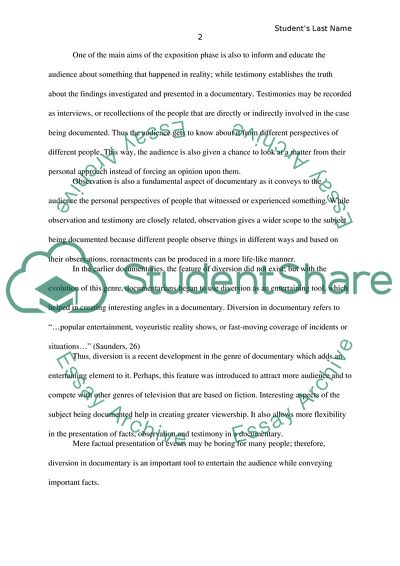Cite this document
(The History of the Genre of Documentary Report Example | Topics and Well Written Essays - 1250 words, n.d.)
The History of the Genre of Documentary Report Example | Topics and Well Written Essays - 1250 words. https://studentshare.org/visual-arts-film-studies/1790656-the-history-of-a-genre-of-entertainment-television-video-games
The History of the Genre of Documentary Report Example | Topics and Well Written Essays - 1250 words. https://studentshare.org/visual-arts-film-studies/1790656-the-history-of-a-genre-of-entertainment-television-video-games
(The History of the Genre of Documentary Report Example | Topics and Well Written Essays - 1250 Words)
The History of the Genre of Documentary Report Example | Topics and Well Written Essays - 1250 Words. https://studentshare.org/visual-arts-film-studies/1790656-the-history-of-a-genre-of-entertainment-television-video-games.
The History of the Genre of Documentary Report Example | Topics and Well Written Essays - 1250 Words. https://studentshare.org/visual-arts-film-studies/1790656-the-history-of-a-genre-of-entertainment-television-video-games.
“The History of the Genre of Documentary Report Example | Topics and Well Written Essays - 1250 Words”. https://studentshare.org/visual-arts-film-studies/1790656-the-history-of-a-genre-of-entertainment-television-video-games.


